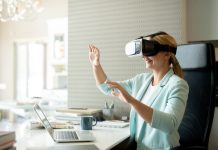Corporate learning is taking a seat at the leadership table, and the price of that admission is greater accountability
Just as digital transformation has elevated IT from what was once a back-office function, operating on a shoestring and headed by an IT manager, to a fundamental business enabler led by a chief information officer (CIO), the same phenomenon is occurring in corporate learning. Retooling workers in the age of automation demands a broader skill set than the typical training manager possesses. Corporate learning in a workplace driven by artificial intelligence (AI) must be overseen by a chief learning officer (CLO) with expertise in implementing learning strategies and quantifying results.
CLOs must measure outcomes far beyond merely ensuring completion of compliance training or other perfunctory learning. This level of accountability can be compared with what’s expected of chief marketing officers (CMOs) who employ big data and advanced metrics to measure the effectiveness of marketing campaigns. CLOs today face the same expectations to collect data and analyze outcomes to demonstrate a business impact, such as improved employee retention, reduced time to realize revenue, improved customer satisfaction, greater safety standard adherence, and lower error rates. Without quantifiable proof, organizations may be unprepared for the brave new world of AI-enabled workforce disruption.
The majority of corporate leaders anticipate dramatic changes as AI impacts company operations, a recent Accenture survey found. These leaders also acknowledge training is needed to prepare workers to use “intelligent tools,” allowing humans and machines to coexist more productively. Clearly, traditional corporate learning won’t cut it to meet these emerging training demands. The estimated $360 billion currently spent globally on corporate learning and training, including $162 billion in North America, too often produces questionable results. Training fails when behavior among people and within organizations does not change and better business outcomes do not materialize.
The low return on investment (ROI) for the hundreds of billions spent on training is neither new nor a secret. Yet even amid what one group of researchers termed the “great training robbery,” employers and providers alike have been reticent to admit the obvious: Corporate learning is broken. Classroom training gets high scores for engagement but delivers little real impact in terms of outcomes. Online training is often boring and ineffective, especially when it
consists of static content and lacks personalization. Adding more courses makes things worse, not better.
Adaptive Learning and Quantifiable Data
Just as “bring your own device” (BYOD) in the workplace and the need to connect personal smartphones, laptops, and tablets to company networks forced a long overdue change in IT, so the AI-driven workplace mandates more effective corporate learning. Fortunately, we know what works. Adaptive e-learning—a personalized, software-enabled teaching approach—consistently delivers on producing outcomes for learners at all levels. The underlying technology is mature, having been proved out in higher education, though it is still relatively rare in the corporate space. And it generates quantifiable results far beyond “checking the box” on course completion.
Adaptive learning has come a long way from its early days, including with new biological models that offer a more organic approach to learning than the traditional inference model. It’s also active learning (vs. the more traditional passive approach), making learning more engaging through a questions-first approach that probes what learners already know, where they have gaps in their knowledge, and their confidence in what they know. Such adaptive learning strategies produce a wealth of data that can be used to adapt and individualize the learning experience. In addition, the collective experience of learners—what they mastered, where they struggled, where they thought they knew the material but did not (known as “unconscious incompetence”)—helps further refine content quality, curricula, and learning strategies.
Making the Business Case
The challenge for CLOs is that greater accountability will require measurement of whether there is a change in employee behavior—i.e., after being trained, employees do something sooner or different. This may take the form of salespeople being better equipped to have a difficult conversation with customers, or technicians being able to perform functions in a new and different way. This is the Holy Grail of learning and development: creating, driving, and measuring behavioral changes and the creation of an environment in which behavioral changes can happen.
The Kirkpatrick Model, as quantified by Donald Kirkpatrick in the 1950s, established four levels of learning evaluation. Level 1 addresses whether learners liked the training. Level 2, did learners acquire new knowledge or develop skills? Level 3, did the person’s behavior at work change? And Level 4, what business impact resulted, such as gains in efficiency, quality, safety, and so forth? Level 4, however, can be difficult to ascertain because of a fundamental challenge in most learning and development: A long period of time often separates intervention and impact, with many independent variables potentially contributing to that impact. This complicates building a business case for corporate learning and development, because the exact cause and effect can become nebulous.
It is much better, therefore, to focus on Levels 2 and 3: Did someone learn something and is he or she applying it? Traditional training approaches fail even to measure Level 2, but with adaptive learning, Level 2 measurement is a “free” byproduct of the teaching-by-asking-questions approach it employs. By adding integrated observational assessments, Level 3 comes within reach. For CLOs, the payoff will be in helping their organizations move from merely being aware that training should be improved, to becoming fully prepared with a workforce that is quantifiably equipped for the AI-enabled workplace.
Nick Howe is chief learning officer at Area9 Lyceum, a global leader in micro-adaptive learning technology. He is also a strategic advisor to the Institute of Simulation and Training at the University of Central Florida and board advisor to multiple EdTech startups.




